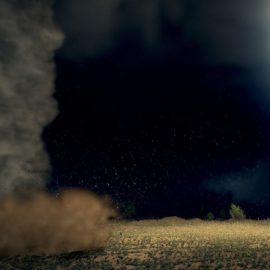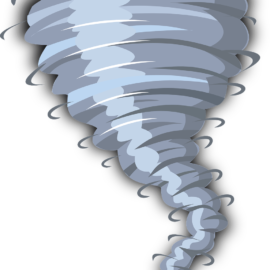
A tornado should be like other tornadoes but the damage caused is not.
As clouds gathered over Memphis on Wednesday morning, scientists gathered between rows of radars in the National Weather Service parking lot and released a weather balloon that was whisked away on a 100,000-foot journey. It was the ceremonial start to the second round of data collection that will help them understand tornado formation in the Southeast — an understudied region where tornadoes cause more deaths than anywhere else in the country. The program, called PERiLS — or Propagation, Evolution and Rotation in Linear Storms — is the largest tornado field study in more than a decade, covering seven states from the Gulf Coast to the Missouri bootheel, and from the mid- and lower- Mississippi Valley to the foot of the Appalachian Mountains. Much of Louisiana, including Baton Rouge, Lafayette and Lake Charles, is included in the study area.
nola.com

National Oceanic and Atmospheric Administration
The basis of the study goes back to 2015.
In 2015, Congress called on NOAA to conduct a southeastern counterpart to its Great Plains tornado studies, known as VORTEX, to better understand the deadlier nature of tornadoes in the Southeast. PERiLS is its continuation of tornado research in the region. NOAA’s National Severe Storms Laboratory and the National Science Foundation are funding the three-year-long, $9 million study in partnership with nine universities. “We are collecting an unprecedented data set to better understand tornadic storms in the Southeast, the environments in which they form and the damage they leave behind,” said Anthony Lyza, PERiLS coordinating scientist. Historically, tornado research has been concentrated in the Great Plains, in part because the flat landscape and sparse tree cover makes monitoring easier. Years of studies in what’s known as “Tornado Alley” has helped scientists understand tornado formation in supercell storms, but tornadoes that emerge from squall line storms, which form ahead of cold fronts, are more common in the Southeast. Squall lines produce shorter-lived and weaker tornadoes than supercell storms, but they often happen at night or during the early morning, catching people by surprise. Compared to other tornado-prone regions, there’s a higher population density in the Southeast and more mobile homes, which makes the storms more dangerous for residents. Their quick development makes it difficult for meteorologists to warn the public. “They’re hard to predict, so they have the potential to cause a lot of damage in these communities,” said Karen Kosiba, the National Science Foundation’s lead scientist for PERiLS.
This is a 3-month study gathering a lot of data.
For the next three months, the scientists will deploy dozens of instruments — a combination of radars, weather balloons and wind profilers, among other tools — to collect real-time data. They’ll pinpoint areas of the storm ripe for tornadoes and position their equipment to take measurements throughout the duration of the storms. Modeling data is valuable in meteorology, but Brian Carcione, the National Weather Service’s regional science and training branch chief, said on-the-ground data collection is critical to understanding tornado formation in squall line storms. “It’s an entirely different thing to have all this information so close to the storms,” Carcione said. “That provides a layer of information that forecasters can use to improve warnings.” Air temperature plays a role in tornado formation. In supercell storms, cold air dictates the speed of the updraft and the strength of the rotation. In squall lines, the role of cold air is less understood, according to Christopher Weiss, a PERiLS researcher and professor at Texas Tech University. His team will deploy probes that measure air temperature, which should reveal its influence on tornado formation.
The data collection ends in May and then the results will be released in a year.
After the data collection ends in May, a year-long analysis will reveal new information about tornado formation in the region. If they can understand the characteristics of squall line storms that produce tornadoes, they can predict them with more accuracy and issue warnings. “Ultimately, the important thing is to save lives,” said Cory Hancock, the National Science Foundation’s public affairs specialist.
I wonder if it is also a fact that the southeast is more populated.



